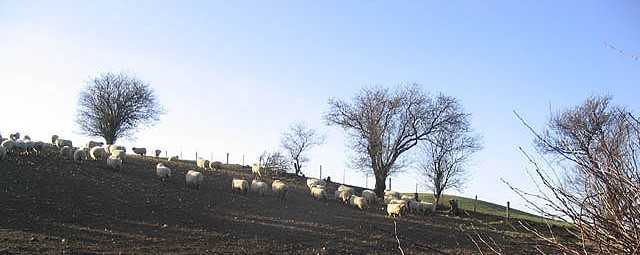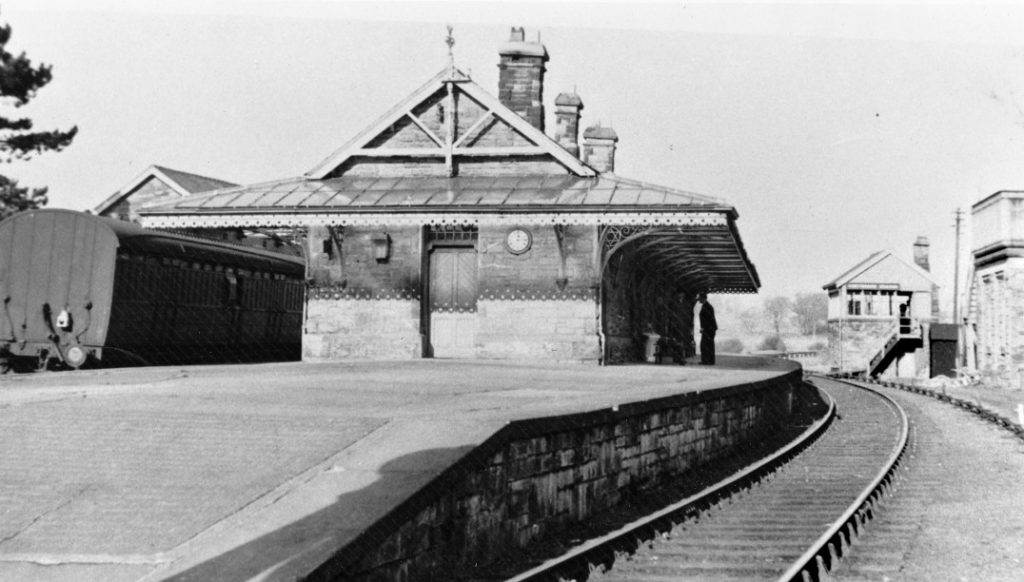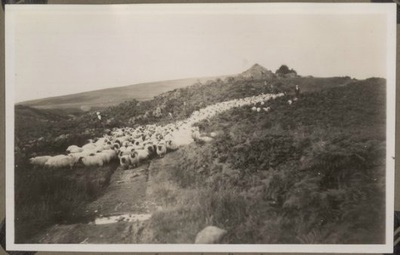
Finding their way home
Submitted by: Sally Brewis - 19th November 2020
This story from the 1920’s comes from J.R. Hedley Murray. Born at Lorbottle Weststeads, he took over the tenancy at Cartington Bankhead in 1940 then the farm at Cartington in 1946 when the farms were joined. Cartington continues to be farmed by the Murray family.
“In those days many arable farms put a quarter of their crop into turnips each year and these were all eaten off by ewes to fertilise the land for the following crop, which was generally barley. To do this they had to let the eating to someone else’s sheep. This was also an advantage to the sheep owner because he got his land clear of ewes all winter and it was clear for his ewes to arrive home for the lambing.

The sheep owner paid 4d to possible 8d per week for the grazing. There was a new agreement made, one of the excuses for going to Berwick Corn Exchange on a Saturday to “take” turnips.
Sometimes the arable farmer agreed to shepherd the sheep which included setting them a break with nets (a break being enough turnips for a week or 10 days). Or the agreement could be for the owner of the sheep to send a man with the sheep and get lodgings for him somewhere near at hand. If frosty weather set in then the agreement always included the arable farmer to supply hay to the ewes. The ewes went to the turnips in late December and came home late in March to get home in time for the start of the lambing.
The most important point my grandfather made was you got all your sheep pastures rested and cleaned ready for the ewes coming home onto. There was now inwintering of ewes in those days, you had to winter on your sheep pastures; in a wet winter they got mud and spoilt the grass.
Sometimes they ewes were driven by road using the drove roads, which are all lost sight of now, other times you hired a train, depending how far you were from the station at each end. Generally, we sent them to the same farm every year. We sent them to Primside Mill, Yetholm which was farmed by John Wilson of Thorndykes grandfather, one or two years. We were nearer home at Lilburn Steads, which was an easy drive by road, taking all the by roads and droveroads.
I remember two years in succession we took them to Mindrum Mill, where there was a large acreage of turnips, so two or three farmers joined and they went as one lot. Those two years at Mindrum Mill we joined with Lorbottle with 450 ewes, Bankhead 250 and Lorbottle Steads 350 ewes, making about 1050. About 30 railway wagons, as 35 ewes was a full wagon.
The three farms would send about four cartloads of turnips down the day before to an arable field near Whittingham Station, by agreement with a Mr Curry at Mount Hooley, and lay the swedes out in the field. We drove the ewes down and they lay in that field ready for loading at the station the next morning. We had ordered a special train before and it would be lying in the station . We would start to load at about 8 o’clock. The loading dock held about eight wagons. We put 35 into each wagon. As soon as we got the eight wagons loaded the engine would draw the dock away and put other eight wagons in to load, and when we got the train all loaded and all the wagons connected up we were ready for off. However, this special train must not get in the way of the regular service, so we may have to be shunted into a siding two or three times on our journey, to let the regular service pass. Two or three of us went in the guard’s van, arriving at Mindrum Station in late afternoon, and like the loading it took time to unload, having to draw the dock two or three times, and when finished unloading we were ready to make for the turnip field.

I remember we had to light up the hurricane lamps, no flash lights then. We got the ewes into the turnip break and home by car, which father had brought to Mindrum. They were “long days” then too.
When we got all the ewes off the farm and only the hogs and tups left on the farm, we found time to repair the fences and all repairs needed for the lambing time .
The homeward journey was the reverse, except we could only load 32 ewes per wagon as the ewes getting near lambing. The days being lighter in the evening the ewes managed home before dark.
There were always three or four harvest carts came to the station to meet the train as there were some lame ewes, some very heavy in lamb, any that started trailing behind were lifted into a cart, (which had sides on ). As soon as a cart was loaded it was set away home . The horses and carts could travel much faster than the ewes, and there was a shuttle service in operation.
Remembering there were ewes from three farms, the time we got the first branch off, the drove would be over two miles long and by this time of evening the ewes were getting very tired.

It was remarkable how the Lorbottle Steads ewes turned down the Tod-le-Moor road to the Steads, the other two flocks turned to the left on to the next parting of the ways where the Bank Head turned left for home, and the Lorbottle turned towards their field. You saw a ewe turn the wrong way, go twenty or thirty yards then look around, give a bleat or two as much to say “I’m on the wrong road”, and turn back and go with her own flock. Next morning we had to sort six or eight or so and take them to their right flock so they were all safely home to their own flocks and farms, foot sore and tired, ready to start the lambing”



